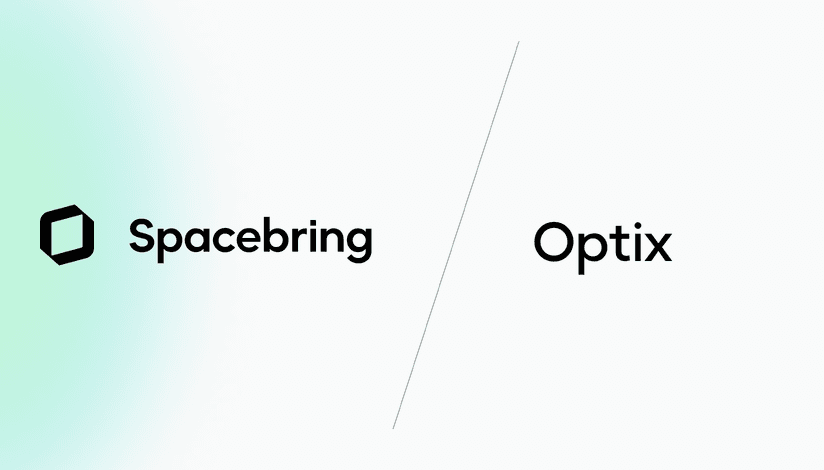Are you constantly playing hide-and-seek with gear in your coworking spot, makerspace, recording studio, or even that busy shared kitchen? You're definitely not the only one pulling your hair out over this stuff.
Those few minutes spent hunting down the right tool, the endless emails trying to sort out who booked the audio interface and when. That little knot of anxiety when you realize the pottery wheel might need some TLC... it all adds up.
It might not feel like a huge deal at the moment, but get this: studies have actually shown that businesses can lose something like 20% of their productivity just because things aren't running smoothly and resources are disorganized.
That's from a report by McKinsey, by the way, and while they were talking about all sorts of business stuff, it totally hits home for our shared spaces, doesn't it? All those little lost moments? They eat into your time, mess with your members' vibe, and even ding your profits.
The good news is that there's a much saner way to get a handle on all your equipment, and it starts with thinking differently about how you manage it.
Core principles of effective equipment rental management
So we've talked about the headaches. Now, let's flip the script and look at the core ideas that make equipment rental management actually *work—*the fundamental principles that can bring order to the chaos.
1. Centralized visibility: knowing at a glance what's where (and if it's free)
Imagine being able to open a single dashboard and instantly see where every single piece of equipment is and when it's free next. No more frantic searching, no more guessing games. That's the power of centralized visibility. It's about having a clear, real-time overview of your entire equipment inventory.
This simple act can save your team countless hours and prevent those frustrating "Where did the [thing] go?" moments. Pairing these tools with off-site self-storage units can further streamline operations by keeping overflow items accessible yet out of the way.
2. Streamlined booking processes: making it easy to reserve (and easy for you to manage)
Think about how your members currently book equipment.
- Is it a clunky email chain?
- A scribbled note on a sign-up sheet?
- A confusing verbal request?
Clear and easy booking processes are key to a happy membership and less admin work for you. This means having a straightforward way for members to see what's available and reserve it themselves, without needing to constantly chase down staff.
For you, it means fewer manual entries, fewer double bookings, and automated reminders that help keep things on track. A smooth booking system not only improves the member experience but also frees up your team to focus on more important things than playing booking agent.

3. Accountability and tracking: knowing who has what (and encouraging responsibility)
Think about those moments when a piece of equipment seems to vanish into thin air or reappears with unexpected damage. Implementing clear systems to track who is using what equipment and for how long plays a vital role in minimizing these issues and encouraging a sense of shared responsibility within your community.
By establishing a clear record of equipment usage, you create an environment where members are more aware of their responsibility towards shared assets. This simple step can significantly reduce instances of loss and damage, ultimately protecting your valuable investments and lowering the costs associated with replacements and repairs. It's about building a culture of respect and careful use of the resources everyone benefits from.

4. Proactive maintenance: keeping your gear in top shape (and avoiding downtime)
Think of your equipment like the workhorses of your space. Just like any machine, they need regular care to keep running smoothly. Proactive maintenance involves tracking equipment usage and scheduling maintenance before things break down.
This might mean setting reminders for cleaning the 3D printers after a certain number of prints, scheduling regular servicing for the sewing machines, or checking the calibration of your recording equipment. By staying ahead of maintenance, you can prolong the lifespan of your equipment, minimize unexpected downtime that disrupts your members, and avoid costly emergency repairs.
5. Data-driven decision making: using usage info to make smart choices
Ever wonder which pieces of equipment are the most popular? Or which ones are barely being used? Tracking equipment usage provides valuable data that can inform your purchasing decisions and help you optimize your inventory.
For example, if you see that the laser cutter is constantly booked solid, it might be time to consider investing in a second one. Conversely, if a particular piece of equipment is gathering dust, you might consider selling it or repurposing the space it occupies. This data-driven approach ensures you're investing in the right resources and making the most of what you already have.

These core principles aren't just abstract ideas; they're the foundation for a well-organized and efficient equipment rental system that benefits both your team and your members, ultimately contributing to a more successful and thriving shared space.
How digital tools can address these principles
How do we actually do all this amazing stuff we just talked about? That's where thinking about digital tools comes in. They're not a magic wand, but they can seriously streamline things and make those core principles of good equipment management a whole lot easier to put into practice. Let's break down how:
1. Centralized inventory management: your equipment's digital home
Imagine having a well-organized digital view of all the equipment within your space. Think of it as a central point where you can easily create and organize equipment listings, complete with helpful descriptions and real-time availability.
For an even smoother operation, you can connect your Google Calendar to see equipment bookings alongside room reservations and even integrate with your access control system to automate equipment access based on bookings or subscriptions.
You can also use tools like the QR Code generator to label equipment with scannable codes, making check-ins and status updates even more efficient.
This provides your team with an instant understanding of what resources are on hand, eliminating the need for time-consuming searches and constant inquiries—it's all readily accessible in one central location. When combined with shift handover software, this centralized approach ensures that critical equipment information and usage updates are passed seamlessly between teams, improving accountability and minimizing downtime.

2. Online booking calendars & automated notifications: say goodbye to double bookings and "oops!" moments
Remember those messy sign-up sheets or endless email threads for booking equipment? Digital tools often include online booking calendars that are a total game-changer. Members can easily see real-time availability and reserve equipment themselves through an app or website.
Plus, these systems can send out customizable notifications to keep everyone in the loop. You can receive instant alerts about new reservations, cancellations, and other important booking updates. You choose which notifications are most important to you and your team, and receive them automatically via email or app.
This makes coordination easier than ever, drastically reduces the chances of double bookings and those awkward "Oh, I didn't realize someone else had it" situations, and makes the booking process smoother for everyone, cutting down on your administrative headaches.

3. Real-time equipment tracking: gaining insights into usage
Beyond simplifying the booking process, digital systems offer the powerful capability of tracking equipment usage in real-time. This means you can monitor which items are currently in use and for how long, providing you with valuable insights into the flow of your resources.
This real-time visibility helps in understanding equipment occupancy and can inform decisions about availability and potential bottlenecks. By tracking usage, you gain a clearer picture of how your equipment is being utilized within your space.
4. Analytical insights: data-driven equipment management
Digital systems provide detailed data on how your equipment is being used, giving you valuable analytical insights. You can easily identify popular items, monitor usage trends over time, and spot underutilized equipment. This data empowers you to make informed decisions about your inventory.
For example, you can export reports to guide decisions on purchasing new equipment, adjusting pricing strategies, or making changes to scheduling and maintanance. By leveraging this data, you can optimize your equipment allocation and maximize the return on your investment.

Essentially, digital tools take those core principles of good equipment management and automate and simplify them, making it much easier for you to run a smooth and efficient shared workspace. They handle a lot of the tedious manual tasks, freeing up your time and providing you with the information you need to make smart decisions.
Questions to ask when evaluating solutions (focus on needs, not brands)
You're thinking, "Okay, this digital stuff sounds promising, but where do I even start?" That's a great question. Instead of getting bogged down in comparing specific software names right away, it's way more helpful to first get really clear on your needs. Think of it like this: you wouldn't go car shopping without knowing if you need a truck for hauling or a sedan for commuting, right? Same thing here. Here are some key questions to ask yourselves as you start exploring potential solutions:
1. What are our biggest pain points in equipment management right now?
Seriously, take a moment and brainstorm. What are the things that drive you and your team crazy?
- Is it the constant hunt for missing items?
- The endless back-and-forth about bookings?
- The frustration of equipment breaking down unexpectedly?
- Maybe it's the lack of insight into what equipment is actually getting used.
Pinpointing your biggest headaches will help you prioritize what features are absolutely essential in any solution you consider. For example, if double-booking is your number one enemy, a robust online booking calendar with real-time availability is going to be a top priority.
2. What level of detail do we need to track for our equipment?
Think about the specifics of your space and your equipment.
- Do you just need to know who has what and when it's due back?
- Or do you need to track things like serial numbers, purchase dates, maintenance history, and even specific condition notes?
A makerspace with expensive machinery might need very detailed tracking, while a coworking space might have simpler needs for shared office supplies. Understanding the level of detail that's important for your operations will help you narrow down the types of systems that will be a good fit.
3. How important is online booking for our members?
Consider your members' experience.
- Would a self-service online booking system make their lives easier?
- Would it reduce the number of inquiries your team has to handle?
For spaces like recording studios or popular makerspace equipment, online booking can be a huge convenience and a real selling point for your membership. On the other hand, if your equipment rental is more informal or less frequent, a simpler internal tracking system might suffice. Weigh the benefits for your members against the potential complexity of implementing and managing an online booking portal.
4. What are our integration needs with other existing systems?
Think about the other tools you're already using to run your space.
- Do you have a membership management system?
- A payment gateway?
- An accounting software?
Ideally, your equipment rental management system should be a part of a singe integrated platform to play nicely with these existing tools to avoid creating data silos and extra work. This eliminates the hassle of juggling multiple logins, manually transferring data between systems, and dealing with potential inconsistencies. When your equipment rental management seamlessly connects with your membership records, payment processing, and accounting, it streamlines your entire workflow. This unified approach saves you valuable time, reduces administrative overhead, and provides a holistic view of your operations, making management simpler and more effective.
5. What is our budget and what level of technical expertise do we have in-house?
Let's be real—budget is always a factor. Equipment rental management solutions range from very basic (and often more affordable) to more comprehensive (and potentially pricier) options. Be realistic about what you can afford.
Also, consider your team's technical skills. How comfortable are they with learning and using new software? A super complex system with tons of bells and whistles might be overkill if your team doesn't have the time or expertise to use it effectively. Look for solutions that offer a good balance of features, ease of use, and cost-effectiveness for your specific situation.
By taking the time to honestly answer these questions, you'll have a much clearer picture of your needs and can approach the process of evaluating potential solutions with a much more focused and effective mindset. You'll be looking for tools that solve your specific problems, rather than just getting caught up in a list of features you might not even need.
Conclusion: empowering your operations through smarter management
So, what's the big takeaway here? It's that getting a solid handle on your equipment isn't just about tidying up your storage room. It's a fundamental part of creating a smooth-running and successful shared workspace, whether that's a coworking hub, a buzzing makerspace, a creative recording studio, or a collaborative kitchen.
When you ditch the chaos and embrace more effective management—especially by exploring what digital tools can offer—you're making a real investment. An investment in your team's time, which they can then spend on things that truly matter, like your members. It's an investment in happier members who can easily access the resources they need, leading to greater satisfaction and loyalty. And ultimately, it's an investment in the long-term growth and sustainability of your space by making your operations more efficient and less prone to costly errors and losses.
Think about it: your equipment is a key part of what makes your space valuable. Taking control of how it's managed means taking control of a significant piece of your overall success. Ready to stop feeling like you're chasing your tail and start empowering your operations?
Book a demo with the Spacebring team today to see how a platform like ours can help you manage your equipment alongside all your other management routines faster.
Frequently asked questions: equipment management in shared workspaces
Q: Why is equipment management important in a shared workspace?
A: Effective equipment management in shared workspaces prevents lost productivity, reduces time wasted searching for items, minimizes booking conflicts, encourages member responsibility, and helps maintain equipment in good condition, ultimately improving member satisfaction and your bottom line.
Q: What are the common challenges of managing shared equipment?
A: Common challenges include difficulty tracking equipment location and availability, double bookings, lack of accountability for lost or damaged items, inconsistent maintenance, and a lack of data to inform purchasing decisions.
Q: What are the core principles of effective equipment rental management?
A: The core principles include centralized visibility of equipment, streamlined booking processes, clear accountability and tracking, proactive maintenance, and data-driven decision making based on usage.
Q: How can digital tools help with equipment management?
A: Digital tools offer centralized inventory management, online booking calendars with automated notifications, real-time equipment tracking, and analytical insights into equipment usage, simplifying and automating many manual tasks.
Q: What should I look for in an equipment rental management system?
A: When evaluating solutions, consider your biggest pain points, the level of detail you need to track, the importance of online booking for your members, integration needs with existing systems, your budget, and your team's technical expertise.
Q: How can I improve equipment booking in my shared workspace?
A: Implement a clear and easy online booking system that allows members to see real-time availability and reserve equipment themselves, reducing administrative work and double bookings.
Q: How can I track equipment usage in a shared workspace?
A: Digital equipment management systems offer real-time tracking features, allowing you to monitor which items are in use and for how long, providing valuable insights into resource flow.
Q: How can I reduce loss and damage of shared equipment?
A: Implement clear systems for tracking who is using what equipment, encouraging a sense of shared responsibility among members.
Q: Why is proactive maintenance important for shared equipment?
A: Proactive maintenance helps prolong the lifespan of your equipment, minimizes unexpected downtime that disrupts members, and avoids costly emergency repairs.
Q: How can data help me make better equipment decisions?
A: Tracking equipment usage provides valuable data on popular and underutilized items, informing purchasing decisions, pricing strategies, and scheduling adjustments.






